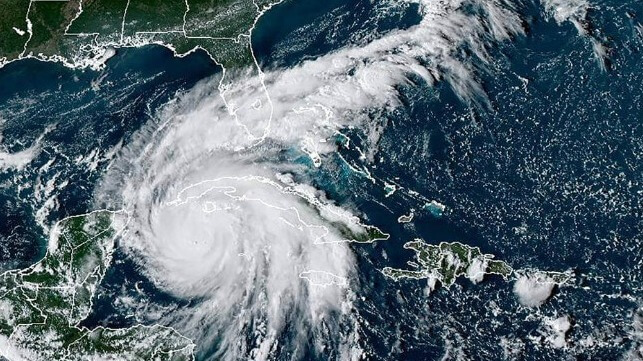Port of Tampa Bay Gets Ready for Hurricane Ian

The Port of Tampa Bay is bracing for what could well be the most powerful storm it has experienced for 100 years. Hurricane Ian is moving north towards Cuba, and communities in South Florida could begin to feel its effects on Wednesday. Tampa is in its potential path, and the shallow waters of Tampa Bay could amplify powerful storm surge effects, which can be more dangerous to life and property than hurricane-force winds.
Hurricane Ian is expected to arrive in Cuba as a major hurricane on Tuesday morning. Conditions favor more intensification and it is expected to reach peak strength over the eastern Gulf of Mexico; however, it will likely weaken and slow down as it passes Florida's west coast on Wednesday and Thursday, according to the National Hurricane Center - and that slowdown will likely prolong the damaging effects of the storm on coastal communities.
#HurricaneIan @ 5 PM EDT
— NWS OPC (@NWSOPC) September 26, 2022
---------------------------------
IAN CONTINUES TO QUICKLY INTENSIFY
Location - 20.3N 83.2W
About 155 MI SE OF THE WESTERN TIP OF CUBA
Max Sustained Winds - 100 MPH
Movement - NNW OR 330 DEGREES AT 13 MPH
Min Central Pressure - 972 MB pic.twitter.com/9f0pV3DOsV
A severe storm surge warning of five to 10 feet is in effect for St. Petersburg, Tampa Bay and the nearby coastline. Heavy rains will add to the dangers of saltwater flooding. Given the serious risks in Tampa Bay, an evacuation order is in effect for 300,000 residents of low-lying areas. The order took effect Monday afternoon, as local officials expect that evacuations will take time and there are only a few days left before the storm's arrival.
“At 6 to 8, 10 feet of water . . . it will come in very rapidly, very powerfully. This could push houses off their foundation,” Pinellas County Emergency Management Director Cathie Perkins warned residents Monday. “Most high-rise buildings, all of their electrical equipment, elevators, all of that is down on the ground floor. All of that is going to be washed away.”
A recent World Bank study found that the greater Tampa Bay area ranks as the world's seventh most vulnerable city for coastal flood damage, thanks to its shallow bay and the large number of structures built at low elevation. It's not the only community set to feel the storm's effects: storm surge of at least four feet is expected along a 200-mile stretch between Fort Myers and the mouth of the Suwannee River.
At Port Tampa Bay, Port Manatee, St. Petersburg and Fort Myers, the U.S. Coast Guard has set Port Condition Yankee, requiring vessels over 500 GT to prepare to depart. Port Tampa Bay's staff have begun to secure facilities along the waterfront and remove any materials that could be blown loose in a storm. Its Port Heavy Weather Advisory Group, made up of regional maritime operators and stakeholders, has set up a queueing sytem for vessels that are required to depart port ahead of the storm.
